Testing the world’s first cancer treatment hat, patients who wear it every day at home have shrunk 31% of tumors
- Tram Ho
The hats can help you shade, beautify, protect when riding a motorbike and access the virtual world. But a special hat can also help patients with cancer treatment. Why not?
In a new study published in the journal Frontiers in Oncology, scientists say they used a magnetic field cap to shrink the tumor in a 53-year-old patient. He had one of the most aggressive and difficult to treat cancers called glioblastoma.
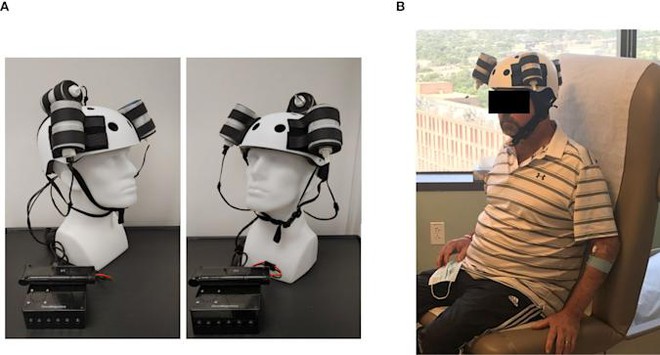
Glioblastoma brain cancer
We know cancer is a dangerous disease mainly because it is difficult to treat. The cells that make up the tumor are the ones that never die. They continuously multiply, spread throughout the body and create tumors inside the patient’s internal organs. At this point, metastatic tumors compress nerves, causing pain to the patient, impairing organ function and eventually causing the patient to die.
Cancer treatment therefore needs to be done as soon as possible, as soon as the tumor is still localized where it started to appear. The main tactics include surgery to remove most of the cancer cells, radiation therapy and chemotherapy to destroy the small remaining cells.
Unfortunately, all three of these treatments can fail with a form of cancer called glioblastoma. That’s because this tumor is located right on the patient’s brain, surgery has a rapid recurrence rate, and radiation and chemotherapy are both risky because of poor access and ineffectiveness.
Usually, patients with glioblastoma brain cancer who have undergone surgery will relapse and die before completing their chemotherapy regimen. Their 5-year survival rate is only 5%, the rest of the patients will usually not live more than 15 months. Glioblastoma is one of the most malignant cancers because humans have no way to treat it.
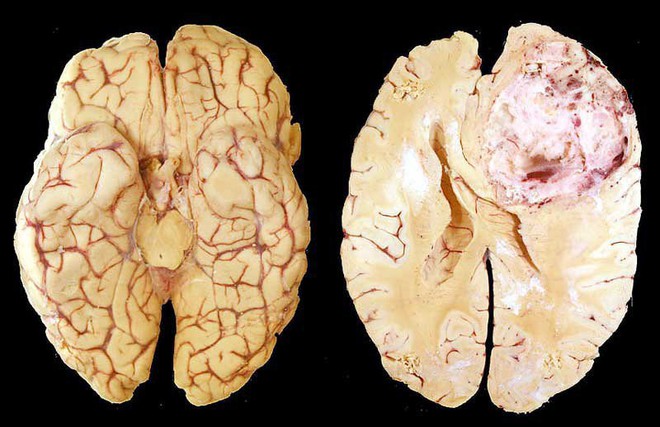
World’s first non-invasive glioblastoma therapy
The nightmare for those diagnosed with glioblastoma brain cancer may now begin to end, after scientists successfully tested a new treatment: A helmet that uses Magnetic field, non-invasive that when the patient puts on his head will be able to shrink his tumor.
The device was recently tested on a 53-year-old glioblastoma patient. His tumor shrank by 31% in just a short time. Scientists say the number could have been even higher had the patient not died from an accident (not related to his brain tumor).
The incident was heartbreaking, but the man who participated in the trial registered to donate his body to medicine. So now doctors have been able to perform an autopsy on his brain to gauge the true effectiveness of the magnetic helmet at killing cancer.
“ Thanks to the courage of this patient and his family, we were able to test and verify the potential efficacy of this therapy, ” said David S. Baskin, a neurosurgeon at Houston Methodist Hospital. world’s first non-invasive glioblastoma treatment”.
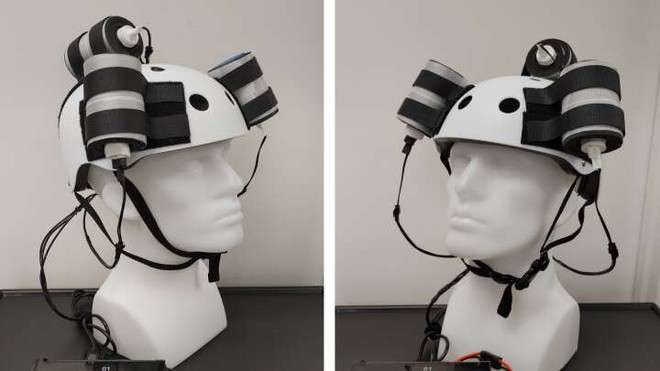
The therapeutic cap is actually a head device with three strong permanent magnets attached in a circle to create an oscillating magnetic field. Previous cell culture tests have demonstrated that oscillating magnetic field technology can kill cancer cells, thereby reducing the number and size of glioblastoma tumors in the brain of mice.
That’s because the magnetic field has the effect of interrupting the electron transport process in the chain reaction taking place in the mitochondria. Mitochondria are known as the powerhouse of the cell, where reactions create chemical energy that powers all of our life activities.
What’s special is that the magnetic field only disrupts the energy-generating process in the cancer cell, with a combination of some of the compounds it produces from boosting the tumor’s metabolism. This means that the glioblastoma cells will die under the magnetic field, while the patient’s healthy cells remain unaffected and remain intact.
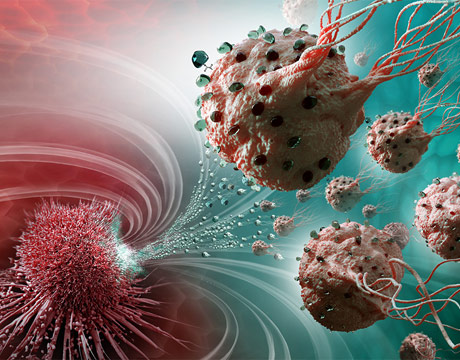
Patients can self-treat at home
In the first human trial, doctors recruited a 53-year-old volunteer who had been diagnosed with glioblastoma since 2018, who had a large tumor that had spread to both. frontal lobe and infiltrate the ” bridge ” between the two cerebellar corpuscles.
In June of that year, he underwent an operation to remove the glioblastoma tumor. Unfortunately, the tumor grew back, and continued to infect despite aggressive treatment. When traditional treatments no longer met the need, the patient was approved to try the magnetic hat.
After taking the test and signing all-risk consent documents, the treatment started from April 2020. In the first 3 days, the patient was monitored and instructed to treat with the hat at the hospital. After that, he was sent home to self-medicate for 2 hours a day, then increased to 6 hours.
When the 36-day continuous dose ended, the patient returned to the hospital for imaging tests. The results showed that the glioblastoma tumor size was reduced by 31%. Family members also reported improvements in speech and cognitive function.
Treatment would have been continued had the patient not suffered a fall and head injury. Sadly, he passed away not long after that.
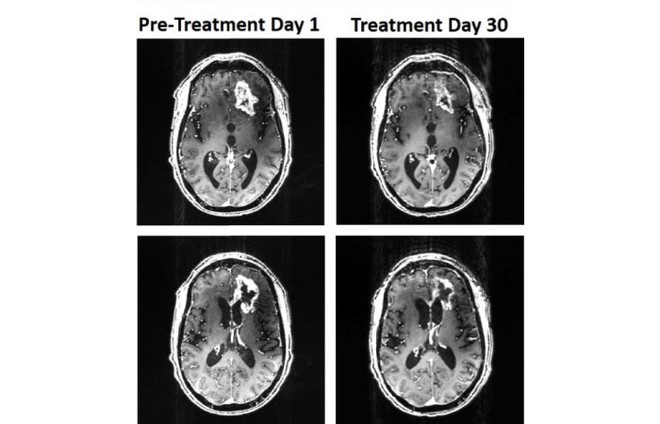
The film shows the effectiveness of the magnetic hat in shrinking tumors.
Although the story doesn’t have a happy ending and this case study was based on a single patient, the scientists say its preliminary results are encouraging. The tumor shrinking effect is consistent with previous observations in mice.
Magnetic fields may be the last treatment option that brain cancer patients can choose when surgery, chemotherapy and radiation have lost their effectiveness. If the cap’s effectiveness is proven in other patients, it would provide a much gentler treatment option for one of the most aggressive forms of cancer today.
” Imagine brain cancer patients who could be treated without radiation or chemotherapy ,” said Dr. Baskin. ” The results of our preclinical and clinical study with this patient open up a new world in which non-invasive and non-toxic brain cancer therapy has a lot of exciting potential in the future. future”.
Refer to Sciencealert
Source : Genk
